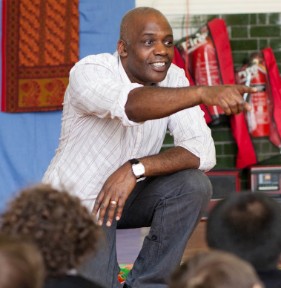

My carrer in the creative industries has been a zigzag between th visual and performing arts. Prior to Storybookers, which is more performance based, my previous two ventures venture were visual art based. Most recent was the Local Gallery in Muswellm Hill, North London and prior to that Mango Red Gallery in Camden.
-----------------------Save our libraries ---------------
Comptetition---------------------------
Achieving great art for everyone makes the case that young people
are leading the way in engaging with new technology, equipping them
to make and debate their own arts, break boundaries between art
forms and pioneer new sources of knowledge. This is familiar territory
for museums and libraries, many of which have been active early
adopters of technology as a means of engaging and delivering services
to young people. There is still more work to do to help young audiences
use these resources to support their own learning and development.
For example, many museums use websites to provide access to a wide
range of information, but few have yet moved onto creating deeper
and more innovative opportunities for digital engagement at a personal
and creative level. In this, museums and libraries face similar challenges
to the arts with regards to their young audiences.
In other respects, museums and libraries can clearly lead the way.
In recent years, libraries have successfully invested in work with
the youngest of audiences, knowing that being able to read at
an early age critically enhances later success in life. Libraries and
museums play an essential role in supporting learning, both in and
outside the classroom. Beyond supporting school-based learning,
they also provide safe and inspiring spaces for many young people
– places in which to meet friends or start to explore their own creative
and intellectual interests and gain a broader understanding of their
own world and that of other people. We know that they are well used
and highly valued, providing young people with access to stimulating
experiences, collections, books, information, music, films, activities and
the internet. They help with the transition to adult life, too – providing
access to information and advice and support for lifelong learning.